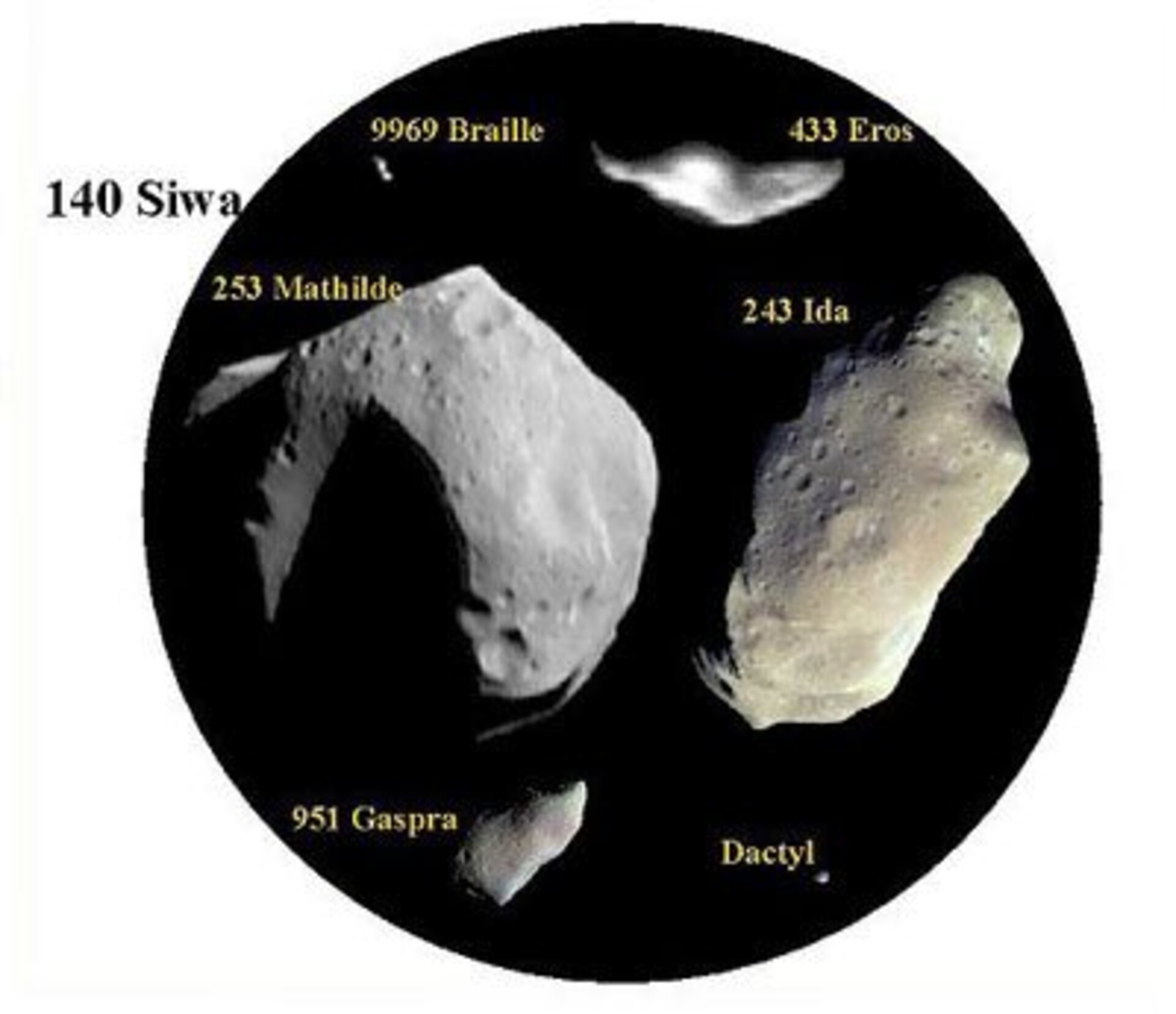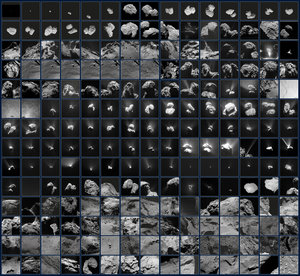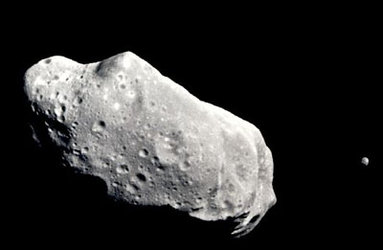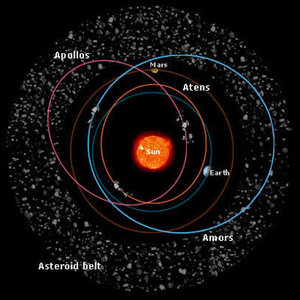Asteroids: Structure and composition of asteroids
From piles of 'rubble' to complex mixtures of metals, and carbon and silicon compounds, asteroids are not just dull grey lumps of cratered rock...
We find that asteroids are fascinating objects, varying in composition and shape. Nearly all asteroids are irregular in shape and heavily pockmarked by impact craters. Only a handful of the largest members possess enough gravity to pull them into spherical shapes.
Beyond their shape, there are a number of ways to classify asteroids. The first is by composition. The typical composition of an asteroid depends on its distance from the Sun. At the outer edges of the asteroid belt, that is between three and three and a half times further from the Sun than the Earth, over eighty percent of the asteroids are known as C-type.
The C stands for carbon and the surfaces of these asteroids are almost coal-black. These asteroids contain large quantities of carbon molecules as well as the more usual rocks and metals. They are very similar in composition to the carbonaceous chondrite meteorites that sometimes fall on Earth. It is thought that these meteorites are chippings, smashed off during collisions between asteroids.
Closer to the Sun, at just over twice the Earth's orbital distance, the proportion of C-type asteroids is only about 40 percent. Here, the majority of asteroids are grey, without the carbon material and principally made of silicate compound rock.
These too resemble a type of meteorite found on Earth, the chondrites. Although these two types of asteroid form the majority of examples, there are some that appear to be composed of little but metal and, again, there are metal meteorites found on Earth.
Aside from composition, there are other important differences in the internal structure of the asteroids. Most are solid, indicating that they must have been molten at some point in their existence. Others are 'rubble piles'. This means that they are loose collections of 'pieces', held together by the force of their gravity. These asteroids were formed in collisions.
An increasing number of asteroids are being found to be 'doubles'. This means that they are two similarly sized asteroids that have drifted together gently and now orbit around each other, sometimes even touching, as they share a path around the Sun.















 Germany
Germany
 Austria
Austria
 Belgium
Belgium
 Denmark
Denmark
 Spain
Spain
 Estonia
Estonia
 Finland
Finland
 France
France
 Greece
Greece
 Hungary
Hungary
 Ireland
Ireland
 Italy
Italy
 Luxembourg
Luxembourg
 Norway
Norway
 The Netherlands
The Netherlands
 Poland
Poland
 Portugal
Portugal
 Czechia
Czechia
 Romania
Romania
 United Kingdom
United Kingdom
 Slovenia
Slovenia
 Sweden
Sweden
 Switzerland
Switzerland

































